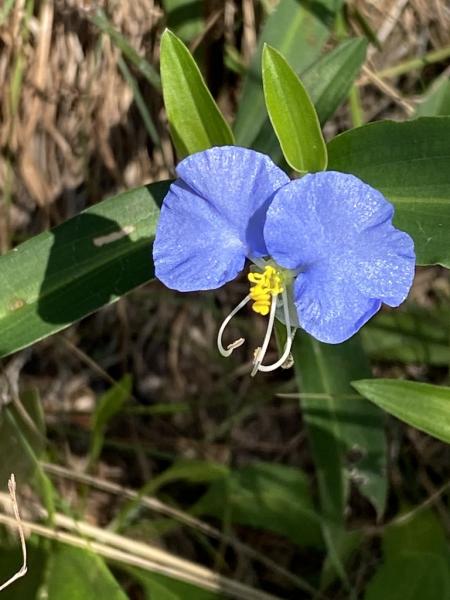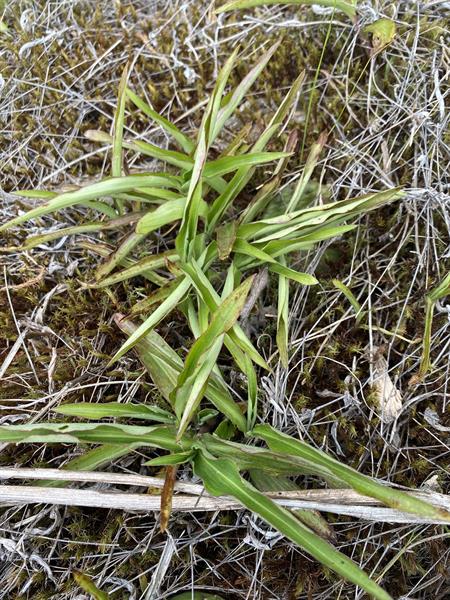
Origin/Endemic status: Native
Synonymy: = C, ETx1, F, G, GrPl, Il, K1, Tat, Brashier (1966); > Commelina elegans Kunth – S, S13, Tx; < Commelina erecta L. var. angustifolia (Michx.) Fernald – FNA22, K4, Mi, Mo1, NY, Pa, RAB, Tn, Va, W, WH3, Faden (1993), Tucker (1989); > Commelina erecta L. var. angustifolia (Michx.) Fernald – S, S13; > Commelina erecta L. var. erecta – Tx; > Commelina saxicola Small – S13; > Commelina swingleana Nash – S13
Wetland Indicator Status:
- Atlantic and Gulf Coastal Plain: FACU (taxonomic split from wetland indicator species)
- Eastern Mountains and Piedmont: FAC (taxonomic split from wetland indicator species)
- Great Plains: FACU (taxonomic split from wetland indicator species)
- Midwest: FAC (taxonomic split from wetland indicator species)
- Northcentral & Northeast: UPL (taxonomic split from wetland indicator species)
Heliophily: 8
Hover over a shape, letter, icon, or arrow on the map for definition or see the legend.
 © Carol Ann McCormick | Original Image ⭷
© Carol Ann McCormick | Original Image ⭷ © Alan Weakley source | Original Image ⭷
© Alan Weakley source | Original Image ⭷Feedback
See something wrong or missing on about Commelina erecta var. erecta? Let us know here: (Please include your name and email if at all complicated so we can clarify if needed.)
Cite as...